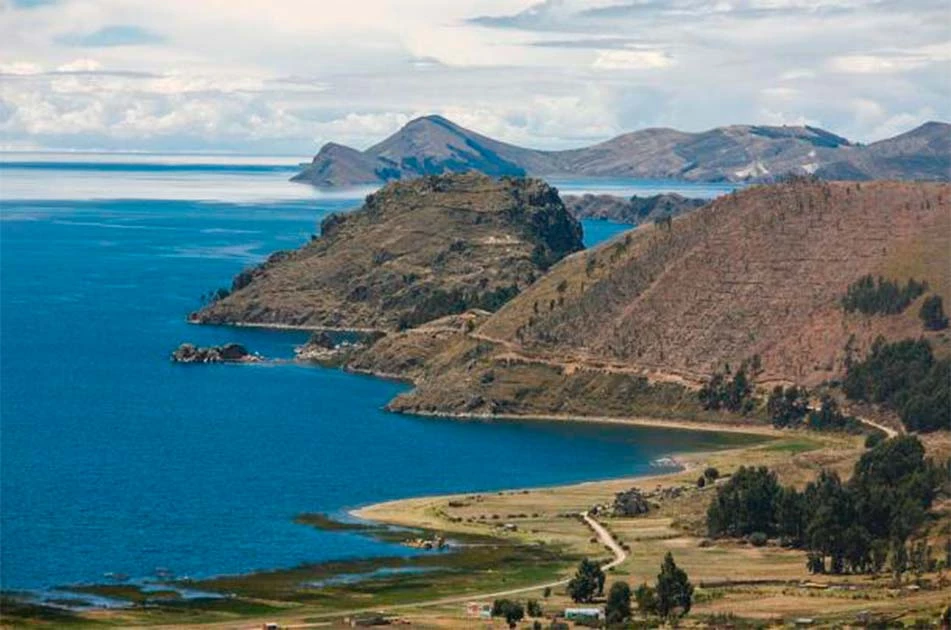Fuente Magna is something odd. A sizable stone vessel, akin to a libation bowl, it was discovered in 1958 near Lake Titicaca in Bolivia. It bears intricately carved anthropomorphic figures, animal motifs typical of the regional culture, and notably, two forms of scripts — an ancient proto-Sumerian alphabet and a local language of the ancient Pukara, precursor to the Tiahuanaco civilization.
It’s often dubbed the “Rosetta Stone of the Americas,” as this stone vessel is among the most disputed artifacts in South America due to the questions it raises about a potential link between the Sumerians and the ancient denizens of the Andes, separated by thousands of miles.

This ancient artifact was accidentally unearthed by a farmer laboring on private property belonging to the Manjon family. The family later handed it over to the city hall of La Paz in 1960, in exchange for land near the capital.
Around the same period, Bolivian archaeologist Max Portugal Zamora became aware of the artifact’s existence and tried unsuccessfully to unravel the cryptic inscriptions, mainly because he didn’t realize the writing on the bowl was a sort of cuneiform script dating back around 5,000 years.
The Fuente Magna bowl was put into storage at the Museo de los Metales Preciosos (“Museum of Precious Metals”) and remained there for approximately 40 years. It was only then that two Bolivian researchers, Argentine Bernardo Biados and archaeologist Freddy Arce, embarked on a quest to uncover the enigmatic relic’s origins.
They managed to contact Maximiliano, a 92-year-old local, who claimed he once possessed the bowl after recognizing it from a photograph. Unaware of its historical significance, Maximiliano confessed he used the bowl to feed his pigs.

The researchers photographed the bowl in detail and sent the images to epigraphist Dr. Clyde Ahmed Winters, hoping he could decode the inscriptions. Dr. Winters, an expert in ancient languages, compared the inscriptions to the Libyco-Berber script used in the Sahara around 5,000 years ago.
This script was used by the Proto-Dravidians (of the Indus Valley), Proto-Mande, Proto-Elamites, and Proto-Sumerians. In his paper, “Decipherment of the Cuneiform Writing on the Fuente Magna Bowl,” Dr. Winters concluded the bowl’s writing was likely Proto-Sumerian and provided the following translation:
“Approach in the future (one) endowed with great protection the Great Nia. [The Divine One Nia(sh) to] establish purity, establish gladness, establish character. (This favorable oracle of the people to establish purity and to establish character [for all who seek it]). [Use this talisman (the Fuente bowl)] To sprout [oh] diviner the unique advice [at] the temple. The righteous shrine, anoint (this) shrine, anoint (this) shrine; The leader takes an oath [to] establish purity, a favorable oracle (and to) establish character. [Oh leader of the cult,] open up a unique light [for all], [who] wish for a noble life.”
The translation implies that the Fuente Magna bowl might have been used for libations to the Goddess Nia to request fertility. The figure on the Fuente Magna, which appears in a “Goddess pose” with outstretched arms and legs, is thought to support Dr. Winters’ translation.
Assuming Dr. Winters’ translation is accurate, this carries significant implications for our knowledge of Sumerian civilization and Bolivia’s ancient culture. Researcher Yuri Leveratto raises a pertinent question: “How can proto-Sumerian inscriptions be found on a bowl discovered near Lake Titicaca, 3,800 meters (2.3 miles) above sea level, thousands of kilometers distant from the region where the Sumerian people resided?”
Bernardo Biados proposes that the Fuente Magna was likely made by Sumerian individuals who migrated to Bolivia after 2,500 BC According to Biados, the Sumerians were known to voyage to the remote Indian subcontinent, and it’s possible some Sumerian ships could have navigated around South Africa and entered a current leading from Africa to South America.
It’s conceivable some decided to remain and venture into the Andes, possibly looking for areas atop the Bolivian plateau where food was plentiful. Yuri Leveratto posits that “the Sumerian culture influenced the people of the plateau, not merely in religious aspects, but also in language. In fact, some linguists have found many similarities between the proto-Sumerian and Aymara languages.”
Yet, this viewpoint and Dr. Winters’ initial translation work have faced their share of criticism. Jason Colavito, a noted skeptic and “debunker,” argues there is only a minor correlation between the bowl’s script and Proto-Sumerian characters. Colavito highlights the bowl’s highly problematic provenance, suggesting it might be a hoax. Biados refutes this, citing the substantial support from large segments of the academic community.
The Fuente Magna bowl remains a contentious topic among scholars. It is anticipated that further archaeological and linguistic research may help unravel the story of this enigmatic artifact, as it could broaden our comprehension of the grand civilizations of our past and their global influence.
Top image: Fuente Magna bowl. Source: Unknown Author / CC BY-SA 4.0.